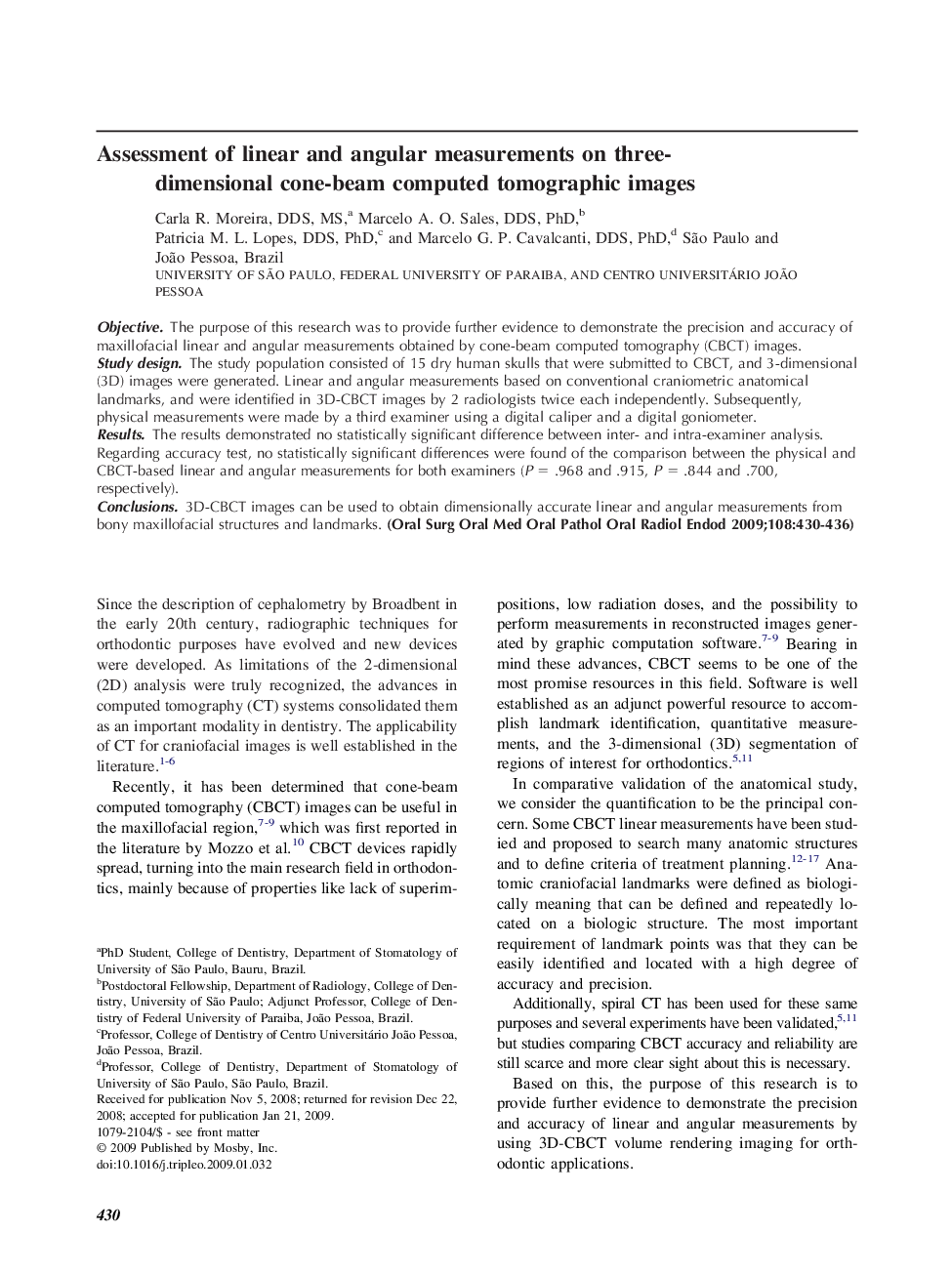| Article ID | Journal | Published Year | Pages | File Type |
|---|---|---|---|---|
| 3167989 | Oral Surgery, Oral Medicine, Oral Pathology, Oral Radiology, and Endodontology | 2009 | 7 Pages |
ObjectiveThe purpose of this research was to provide further evidence to demonstrate the precision and accuracy of maxillofacial linear and angular measurements obtained by cone-beam computed tomography (CBCT) images.Study designThe study population consisted of 15 dry human skulls that were submitted to CBCT, and 3-dimensional (3D) images were generated. Linear and angular measurements based on conventional craniometric anatomical landmarks, and were identified in 3D-CBCT images by 2 radiologists twice each independently. Subsequently, physical measurements were made by a third examiner using a digital caliper and a digital goniometer.ResultsThe results demonstrated no statistically significant difference between inter- and intra-examiner analysis. Regarding accuracy test, no statistically significant differences were found of the comparison between the physical and CBCT-based linear and angular measurements for both examiners (P = .968 and .915, P = .844 and .700, respectively).Conclusions3D-CBCT images can be used to obtain dimensionally accurate linear and angular measurements from bony maxillofacial structures and landmarks.
